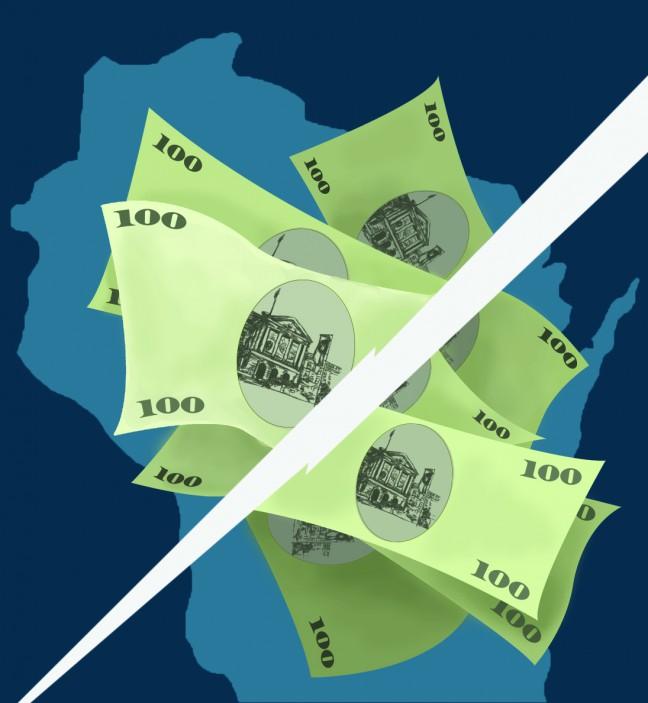The Wisconsin Department of Health Services held 12 public listening sessions in January to help decide how to spend $400 million worth of incoming opioid settlement funds, according to the DHS website. The crowdsourced ideas will be used to guide investment into community prevention of opioid addiction and overdose, according to the website.
Last year, drug manufacturer Johnson & Johnson and three of its distributors signed a $26 billion national opioid settlement agreement to be distributed to states in the U.S., according to Reuters. Wisconsin is receiving $400 million in settlement funds over 18 years, according to the Wisconsin Department of Justice.
The 2021 Wisconsin Act 57, approved and signed by the Gov. Tony Evers and the Legislature earlier this year, details how the funds are to be divided — local governments will receive 70% of the funds and the Department of Health Services will receive the other 30%.
At the virtual DHS listening session, Wisconsin stakeholders and residents alike voiced ideas on how these funds could be used to mitigate Wisconsin’s opioid crisis.
Ideas from these listening sessions will be used to determine the best regional and statewide approaches to prevent further opioid misuse, DHS Director of Opioid Initiatives Paul Krupski said in a recent press release. Speakers at the listening sessions were prompted with questions like, “What has worked?” “What can improve?” and “What would you like to see happen?”
Jay Ford, who is an assistant professor at the University of Wisconsin School of Pharmacy, said Wisconsin should increase access to methadone, a medication used to treat opioid use disorder. Ford’s research at the UW School of Pharmacy includes investigating how to break down barriers to substance abuse treatment.
Research shows medication-assisted treatment, also known as MAT, which often utilizes medications like methadone or suboxone, can help reduce opioid dependency, according to Substance Abuse and Mental Health Services Administration, also known as SAMHSA. The treatment combines medication treatment with counseling and behavior therapies to provide a whole-patient approach to substance abuse disorder treatment, according to SAMHSA.
In an earlier listening session, substance abuse counselor Amanda Dinger shared how funds can be used to expand medication-assisted opioid addiction treatment, according the Milwaukee Journal Sentinel.
“The problem is, in a rural community, we can’t get to it,” Dinger said. “Transportation is always an issue.”
Some speakers from rural areas, like Dinger, who hailed from a small Wisconsin city with under 10,000 residents, suggested mobile units to deliver MAT to those in need.
Other speakers suggested perscriber education, supportive recovery housing and decreased treatment costs. Other participants suggested a state-wide monitoring program to ensure equal distribution of knowledge and resources between counties.
The Centers for Disease Control and Prevention recent announcement that the U.S. reached record levels of overdose deaths in 2021 may have spurred these calls for change. Overdose deaths in the U.S. rose to higher than 98,000 with Wisconsin alone reporting 1,226 opioid overdose deaths in 2020. Wisconsin’s death toll is predicted to increase by 12.9% over a 12-month period, according to the CDC.
COVID-19 has only exacerbated the crisis, according to Dr. Randall Brown, who is a physician for addiction medicine at UW Health.
“Isolation has created a greater risk for overdose,” Brown said.
But increased availability of of Naloxone, or Narcan, could decrease this risk. Naloxone can reverse an overdose by blocking the effects of opioids, so having it on hand during an opioid overdose can save a life, according to the FDA.
“Naloxone boxes could be posted in bars or libraries similar to the way defibrillation devices are,” Brown said.
Wisconsin Attorney General Josh Kaul agrees treatment and prevention services must be made more accessible through these funds, according to a Department of Justice press release on the settlement.
The money could help make at-risk communities safer, Kaul said on Wisconsin Public Radio’s The Morning Show. Though the money can be used for treatment programs, Kaul argues the millions of dollars from the settlement are still not enough to undo the harm the opioid epidemic has already caused.
The settlement agreement is not an admission to any wrongdoing, but a response to 3,300 lawsuits, according to a statement on Johnson and Johnson’s website.
Though Johnson and Johnson no longer sells prescription opioid medications, the company considers its past actions “appropriate and responsible.”


